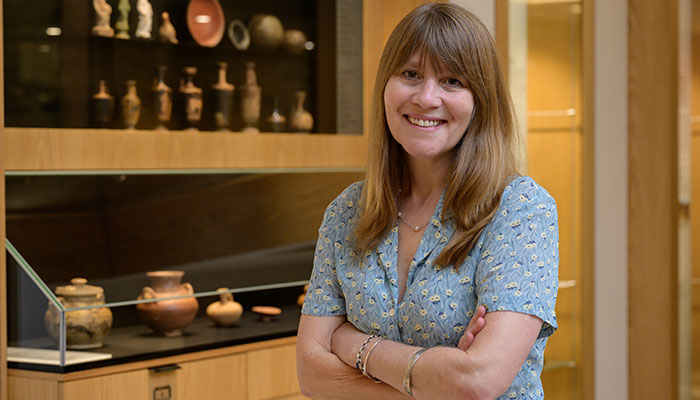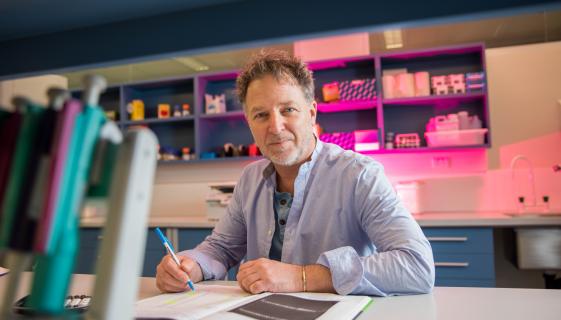For 95 per cent of history since the appearance of Homo sapiens, pandemic disease was not on humanity’s radar. Hunter-gatherers lived in small disconnected groups of a few dozen people, who kept on the move and only occasionally came into contact with others.

Line of defence: Poor hygiene in the past made dense populations more susceptible to disease.
Should a deadly disease arise in one of these groups, contact with the wider population was far too infrequent for it to spread very far. If an illness did arise, it would likely only kill one or two groups, giving the disease far less time to mutate and evolve and become even more deadly.
All that changed with the invention of farming 12,500 years ago. Humans began dwelling in denser populations of hundreds or thousands, where contact between communities and regional trade became increasingly common.
Sedentary lifestyles, where people stayed and farmed in one place, gave diseases more of a chance to develop and mutate. Worse still, in early farming communities hygiene dramatically declined and malnutrition became more common, making dense populations more susceptible to disease.
Early farmers also lived at close quarters with their livestock, from which diseases like avian and swine flu could mutate and be transmitted to humans.
The final wave of the bubonic plague arrived in Sydney in 1900 and thrived in the rat-infested impoverished areas of the city.
Livestock and sedentary humans tended to pollute their own water supplies with feces, leading to the occurrence of diseases like cholera (as well as the mixed blessing of people inventing alcohol to drink instead of water). Sedentary living also brought vermin like fleas and rats which carried plagues that could be transmitted to humans.
The epicentre of almost every pandemic in human history has something in common: a dense population and poor living conditions. For most of human history, Afro-Eurasia was a hotbed of the world’s biggest killers, since it was the earliest to adopt agriculture and for most of history contained 80 to 90 per cent of the world population.
Here diseases could mutate and grow more sinister. Accordingly, the major pandemics that have struck Australia over the past few centuries found their way from epicentres with dense populations and poor living conditions in Afro-Eurasia.
Devastating disease cocktail
It was a cocktail of diseases long since evolved in Afro-Eurasia (smallpox primary among them) that Europeans first brought to Sydney in the outbreak of 1789 and which reduced the Indigenous population (which had evolved no natural resistances to the mutations over the past 60,000 years) by an estimated 65 to 90 per cent over the course of the next century.

Contagion: Covid-19 appears to be fast spread and low mortality, provided healthcare is adequate.
The smallpox outbreak in Sydney in 1881 came from trade ports in Asia (most likely Hong Kong). The final wave of the bubonic plague which had swept through impoverished parts of China and India in the late 19th century arrived in Sydney in 1900 and thrived in the rat-infested impoverished areas of the city, prompting a massive wave of reforms to living conditions.
The 'Spanish Flu' of 1918-1919 (so-called because wartime and postwar censorship prevented the worst reporting from most countries except neutral Spain) arose in the appalling conditions of the trenches and the military bases across the world to which troops returned.
Thanks to the method of travel being by ship in 1918 and 1919, we saw Spanish Flu coming a long way off and Australia had months to prepare. The entire country was quarantined. Only 15,000 people died in a world that suffered much higher rates of mortality elsewhere (a total of between 20 and 50 million with one third of the world becoming infected).
Spanish Flu was a fast-spread, high-mortality pandemic. If Australia had air travel in the same volume as today, we would have been much harder hit. Australia can no longer depend on the sea as a line of defense, and thanks to air travel the country might as well be situated in the middle of Europe or Asia.
Why a deadly pandemic is likely
The common factor in all of these mutations are dense populations living in poor conditions, whether in the countryside or in one of the most hellish wars in history. So where does that leave us with pandemics today and in the future?
Throughout history the worst pandemics arose because people were living in poor conditions in which diseases could mutate.
The current coronavirus (Covid-19) first mutated in Hubei province, inland and heavily agrarian, which has a massive population of 59 million people. That is over twice the population of Australia contained within 2.5 per cent of the land area. Hubei is also decidedly less developed in living standards than some Chinese coastal provinces.
The current coronavirus at time of writing appears to be fast-spread and low-mortality, provided a region has adequate healthcare, though this could change if the disease continues to mutate and spread.
Yet what are the odds of a fast-spread, high-mortality disease like the Spanish Flu happening again? The bad news there is that at present such a massive deadly pandemic is very likely in an increasingly interconnected world with a growing population approaching 8 billion.
However, this is not just due to population size or density. Throughout history the worst pandemics arose because people were living in poor conditions in which diseases could mutate.
And so, for as long as such regions exist in the world, on a long enough timescale another devastating pandemic is inevitable. In the long term, development of living standards and avoidance of war is the best way to prevent a 'superbug' arising in any region and killing millions or billions globally.
But one might as well sing 'kumbaya' while we all cross our fingers. Given that there is no glimmer on the horizon of this happening, it is up to Australia to have plans in place to immediately shut down passenger air travel to our shores from infected regions or almost completely at the first whisper of a high-mortality pandemic.
Yet this is easier said than done in an increasingly interconnected world, dependent on overseas trade, with millions of people constantly on the move, and above all, governments hesitant to disrupt the status quo.
David Baker is a Lecturer in the Department of Modern History, Politics and International Relations.



